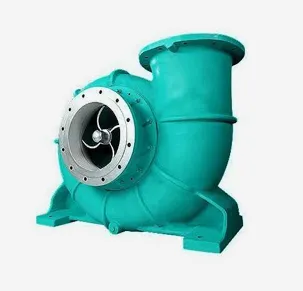English
- Afrikaans
- Albanian
- Amharic
- Arabic
- Armenian
- Azerbaijani
- Basque
- Belarusian
- Bengali
- Bosnian
- Bulgarian
- Catalan
- Cebuano
- Corsican
- Croatian
- Czech
- Danish
- Dutch
- English
- Esperanto
- Estonian
- Finnish
- French
- Frisian
- Galician
- Georgian
- German
- Greek
- Gujarati
- Haitian Creole
- hausa
- hawaiian
- Hebrew
- Hindi
- Miao
- Hungarian
- Icelandic
- igbo
- Indonesian
- irish
- Italian
- Japanese
- Javanese
- Kannada
- kazakh
- Khmer
- Rwandese
- Korean
- Kurdish
- Kyrgyz
- Lao
- Latin
- Latvian
- Lithuanian
- Luxembourgish
- Macedonian
- Malgashi
- Malay
- Malayalam
- Maltese
- Maori
- Marathi
- Mongolian
- Myanmar
- Nepali
- Norwegian
- Norwegian
- Occitan
- Pashto
- Persian
- Polish
- Portuguese
- Punjabi
- Romanian
- Russian
- Samoan
- Scottish Gaelic
- Serbian
- Sesotho
- Shona
- Sindhi
- Sinhala
- Slovak
- Slovenian
- Somali
- Spanish
- Sundanese
- Swahili
- Swedish
- Tagalog
- Tajik
- Tamil
- Tatar
- Telugu
- Thai
- Turkish
- Turkmen
- Ukrainian
- Urdu
- Uighur
- Uzbek
- Vietnamese
- Welsh
- Bantu
- Yiddish
- Yoruba
- Zulu
Telephone: +86 13120555503
Email: frank@cypump.com
Aug . 21, 2024 03:27 Back to list
Understanding the Principles and Applications of Axial Flow Pumps in Various Industries
Understanding Axial Flow Pumps Principles and Applications
Axial flow pumps are a vital component in various industrial applications, where the efficient transportation of fluids is necessary. Unlike other types of pumps, such as centrifugal pumps, which transfer fluid radially, axial flow pumps move fluid parallel to the pump shaft's axis. This unique design allows for specific advantages, particularly in large volume flow applications where high efficiency is required.
Principles of Operation
The operation of an axial flow pump is relatively simple yet effective. It consists of a rotor (or impeller) and a stator. The rotor is equipped with blades angled at a specific pitch. As it rotates, the rotor draws fluid into the pump and accelerates it along the axis of the pump. The kinetic energy generated by the moving blades increases the fluid's velocity, pushing it out through the discharge outlet.
One of the primary characteristics that distinguish axial flow pumps is their ability to handle large volumes of liquid at low-pressure changes. This makes them ideal for applications such as irrigation, drainage, and cooling water circulation in power plants. The flow rate can be adjusted by controlling the speed of the motor driving the pump and adjusting the blade angle.
Advantages of Axial Flow Pumps
Axial flow pumps offer several significant advantages 1. High Capacity They can transport large volumes of fluid efficiently, making them suitable for industrial applications. 2. Energy Efficiency These pumps tend to be more energy-efficient for high-flow, low-head situations than centrifugal pumps, leading to reduced operational costs. 3. Versatility Axial flow pumps can be used for various fluids, including clean water, wastewater, and even some chemical solutions, which makes them highly adaptable in different sectors. 4. Compact Design Their design often allows for a more compact installation compared to centrifugal pumps, saving valuable space in facilities.
axial flow pump

Applications
The applications of axial flow pumps span various industries
- Water Treatment Plants They are used for pumping large volumes of wastewater and maintaining flow in treatment processes. - Irrigation Systems Farmers utilize these pumps for efficient water distribution across vast agricultural lands. - Cooling Systems In power plants, they circulate cooling water needed for machinery and process regulation. - Flood Control They play a critical role in drainage systems for flood prevention and management, helping to safely remove excess water from urban areas.
Challenges and Considerations
Despite their advantages, axial flow pumps also have limitations. They are generally not suitable for high-pressure applications, as their design does not favor pressure generation. Moreover, they require careful consideration regarding cavitation, which can occur if the fluid’s pressure drops below its vapor pressure. This phenomenon can lead to impeller damage and reduced efficiency.
To summarize, axial flow pumps are essential tools in fluid transport across various industries. Their design and functionality enable efficient movement of large volumes of liquids at low pressures. Understanding their principles, advantages, and applications assists engineers and managers in selecting the right pump for specific needs. As sectors continue to focus on sustainability and efficiency, the demand for advanced and reliable axial flow pumps is likely to grow even further.
-
Custom Drilling Mud and Slurry Pump Supplier - High Efficiency, Tailored Solutions
NewsJun.10,2025
-
Supply Vertical Submersible Sewage Pump High-Efficiency WQ/QW Pumps Supplier
NewsJun.10,2025
-
Premium Sewage Ejection System & Pumps Efficient Waste Removal
NewsJun.09,2025
-
Premium Wholesale Slurry Pump Impellers Durable & Efficient Slurry Handling
NewsJun.09,2025
-
Top Sewage Pump Companies Durable Industrial Solutions for Efficiency
NewsJun.09,2025
-
Heavy Duty Slurry Pumps - OEM High Performance & Bulk Wholesale
NewsJun.09,2025










